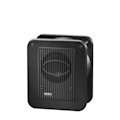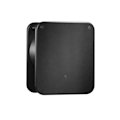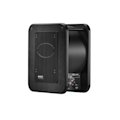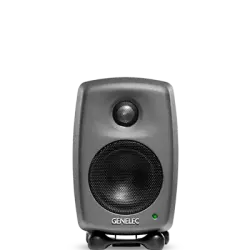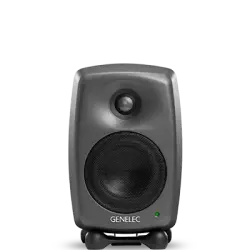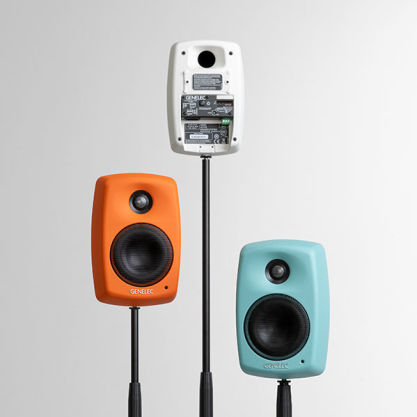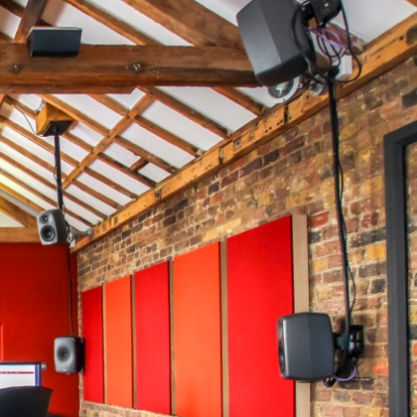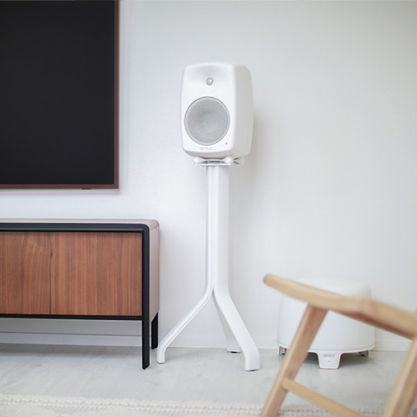Nuestro Subwoofer profesional más compacto, el 7040A, brinda precisión y control de graves en los espacios de producción más reducidos.
7040A
Subwoofer de Estudio

Active Crossovers

Bass Management System

SPL
100 dB

Respuesta en frecuencia
30 Hz - 90 Hz (-6 dB)

Dimensiones
H 410 x W 350 x D 205 mm, (ver en pulgadas)
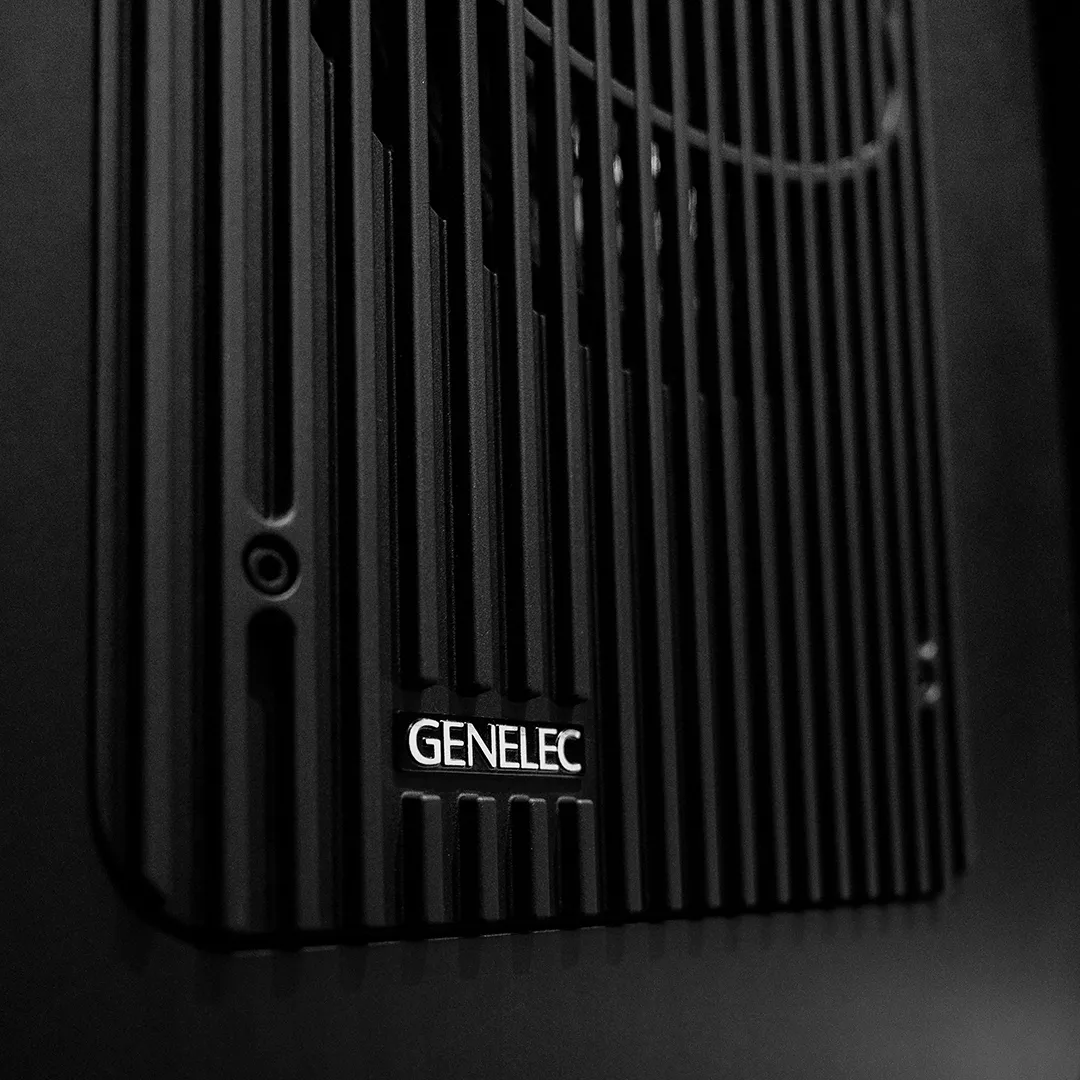
No es solo "más graves"
Un gran subwoofer es mucho más que simplemente ofrecer "más graves". El diseño de espiral laminar del 7040A garantiza que pueda ofrecer un alto rendimiento SPL que sea preciso, articulado y libre de distorsión, desde los 30 Hz. Entonces, cuando se combina con nuestros monitores de campo cercano 8010 o 8020, el 7040A crea un sistema de rango completo que es completamente fluido. Simplemente suena "bien".
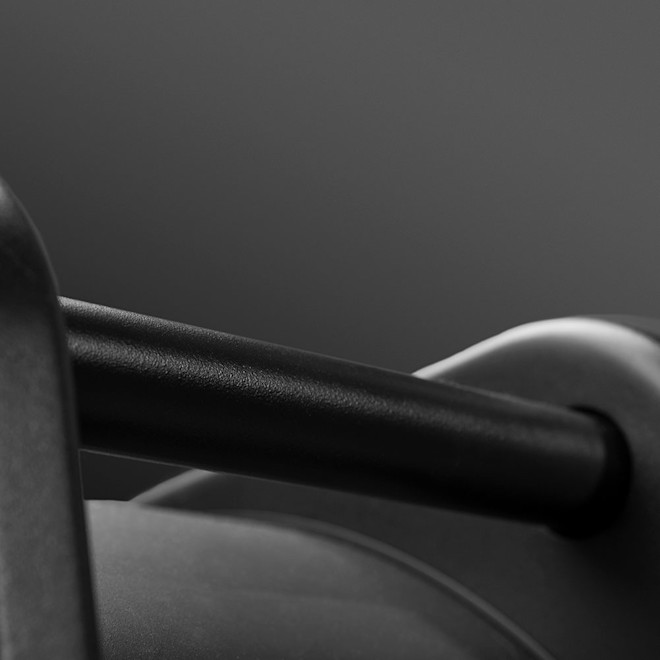
Gestión superior
La tecnología de gestión de graves integrada permite al 7040A filtrar la información LF de los canales principales y asumir la responsabilidad de manejarla, aumentando así el rango dinamico y reduciendo la distorsión de los monitores principales, que luego pueden enfocar su energía en el resto del espectro de frecuencias. Además, los controles de compensación de sala le permiten optimizar el 7040A para el entorno de su sala exactamente de la misma manera que nuestros monitores, por lo que puede estar seguro de que producirá mezclas que se reflejaran perfectamente.
Especificaciones técnicas

SPL
100 dB

Potencia del amplificador
50 W Bass (Class D)

Respuesta en frecuencia
30 Hz - 90 Hz ("-6 dB")

Precisión de la respuesta en frecuencia
± 3 dB (33 Hz - 85 Hz)

Dimensiones del altavoz
⌀ 165 mm Bass (ver en pulgadas)

Dimensiones
H 410 x W 350 x D 205 mm, (ver en pulgadas)

Peso
11.3 kg / 24.9 lb

Conexiones
2 x XLR Analog Input
2 x XLR Analog Output
7040A Studio Subwoofer
Subwoofer de Estudio
Especificaciones técnicas
Nuestro Subwoofer profesional más compacto, el 7040A, brinda precisión y control de graves en los espacios de producción más reducidos.

Especificaciones del sistema
Respuesta en frecuencia
33 Hz - 85 Hz (± 3 dB)
Corte de graves -6 dB
30 Hz
Corte de agudos -6 dB
90 Hz

SPL
SPL máximo a corto plazo Máxima salida de SPL instantánea de onda sinusoidal promedio de 40 a 85 Hz, medida en medio espacio a 1 metro.
≥100 dB
Ruido propio
Ruido propio Nivel de ruido inherente en medio espacio a 1 metro (A-weighted).
≤5 dB SPL
Peso
Peso11.3 kg (24.9 lb)
Dimensiones
Altura
410 mm
Anchura
350 mm
Profundidad
205 mm
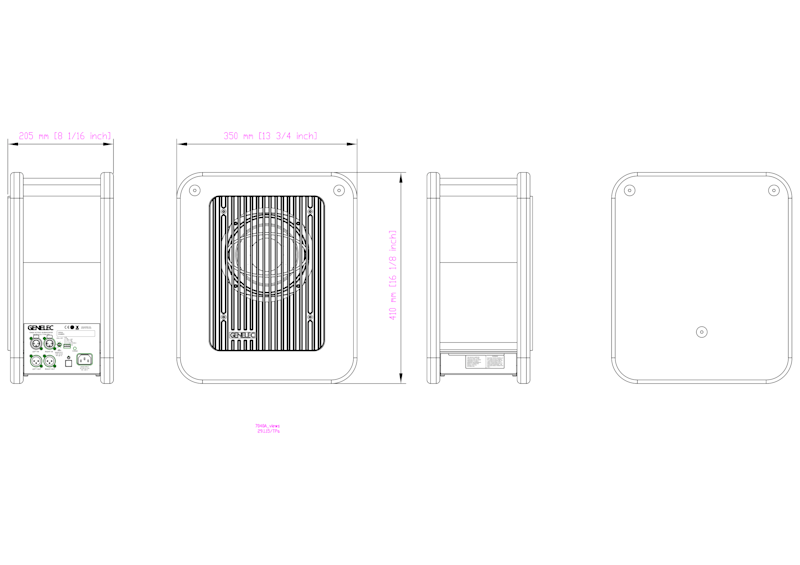
Recinto
Material del recinto
MDF
Tipo de recinto
Reflex port
Altavoces
Tipo de altavoz
Cone
Diámetro
165 mm
Distorsión armónica
Sección de amplificación
Amplificadores
50 W Class D
A high-efficiency, low-distortion 50W Class D amplifier with integrated driver protection circuitry.
Voltaje de la toma eléctrica
100-240 VAC 50/60Hz
Consumo de potencia
Con ISS activo
≤0.5 W
En reposo
≤5 W
A pleno rendimiento
70 W
Sección de procesado de señal
Conectores
2 x Input Analog signal input connector XLR female, balanced 10 kOhm.
2 x Output XLR male.
Variantes de producto
Códigos de producto
Para más detalles técnicos consulte por favor el manual de operación del producto
Tecnologías clave

Active Crossovers

Bass Management System

Intelligent Signal Sensing (ISS™) Technology

Laminar Spiral Enclosure (LSE™) Technology

Optimised Amplifiers

Protection Circuitry

Room Response Compensation
Active crossover operating at low signal levels.

Audio electronic crossovers allow the audio signal to be split into separate frequency bands that are separately routed to individual power amplifiers, which are then connected to specific transducers optimised for a particular frequency band.
Active crossovers come in both digital and analogue varieties. Genelec digital active crossovers include additional signal processing, such as driver protection, delay, and equalisation.
Genelec analogue active crossover filters contain electronic components that are operated at low signal levels suitable for power amplifier inputs. This is in contrast to passive crossovers that operate at the high signal levels of the power amplifier's outputs, having to handle high currents and, in some cases, high voltages.
In a typical two-way system the active crossover needs two power amplifiers — one for the woofer and one for the tweeter.
The active crossover design offers multiple benefits:
- The frequency response becomes independent of any dynamic changes in the driver's electrical characteristics or the drive level.
- There is increased flexibility and precision for adjusting and fine-tuning each output frequency response for the specific drivers used.
- Each driver has its own signal processing and power amplifier. This isolates each driver from the drive signals handled by the other drivers, reducing inter-modulation distortion and overdriving problems.
- The ability to compensate for sensitivity variations between drivers.
- The possibility to compensate for frequency and phase response anomalies associated with a driver’s characteristics within the intended pass-band.
- The flat frequency response of a high-quality active loudspeaker is a result of the combined effect of the crossover filter response, power amplifier responses and driver responses in a loudspeaker enclosure.
Using the active approach enables frequency response adjustments and optimisation of the full loudspeaker system, placed in various room environments, without expensive external equalisers. The end result is a simpler, more reliable, efficient, consistent and precise active loudspeaker system.
Bass Management System handles multichannel low frequency content.
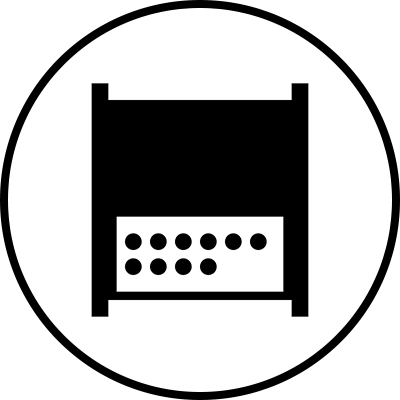
The principle of bass management is that the bass content of the main channels and the Low Frequency Effect (LFE) channel are directed and reproduced only by loudspeakers capable of handling them, whether they are main system loudspeakers or one or more subwoofer(s).
In stereo reproduction, signals from 20 Hz to 20 kHz need to be replayed. Large multi-way monitoring systems will reproduce such a wide bandwidth evenly. With multichannel audio, professional and consumer audio systems must also be able to reproduce audio between 20 Hz and 20 kHz for each channel. To achieve this, main monitors, subwoofers and crossover electronics should work together.
A Bass Management system uses either analogue electronic circuitry or software based filtering which will filter low frequency information from the main channels and route that information to one, or more, subwoofer feed.
The dedicated LFE channel can also be monitored via that subwoofer and added to the low frequencies of the other main channels. Therefore, the Bass Management’s basic and main goal is to ensure that the entire audio bandwidth of all channels can be accurately monitored.

The benefits of the Bass Management System:
- The subwoofer extends the system frequency response down the lower limit of the audible range
- Monitor can produce a higher maximum sound level when not reproducing low frequencies
- Optimized low frequency reproduction by selecting adequate subwoofer location; monitors can also be placed more freely
- Subwoofer’s output are aligned in level and phase with monitors allowing flat and accurate reproduction down to 19 Hz and across the crossover point
- LFE channel output level (0 or +10 dB re. main channels) can be selected for accurate reproduction depending on the source type
- The ability to bypass the subwoofer allows to evaluate the audible impact of the subwoofer
Intelligent Signal Sensing (ISS™) for power consumption reduction in stand-by mode.

Introduced early 2013, Genelec’s Intelligent Signal-Sensing technology has been developed to meet with both European Union ErP Directives and Genelec's own ambitious sustainability standards.
The Intelligent Signal Sensing, ISS™ circuitry tracks the signal input of the loudspeaker and detects if it is in use. If the ISS circuit does not find any audio on the input for a period of time, it sets the loudspeaker to a low-power sleep state and the loudspeaker will consume less than 0.5 watts. When an input signal is detected, the loudspeaker immediately turns itself on.
Additionally an ‘ISS Disable’ switch is located on each product’s back plate next to the other room response controls. First, when the mains power switch of the loudspeaker is set to 'ON', the ISS™ auto-start function (low-power sleep state on/off) of the loudspeaker is active.

If this function is not desired, the ISS™ function can be disabled by setting the 'ISS Disable' switch on the back panel to 'ON' position. In this mode, the monitor is only powered on and off using the mains power switch.
Note that the mains power switch will always turn the monitor off completely.
Highly efficient Laminar Spiral Enclosure (LSE™) provides accurate low frequency reproduction.
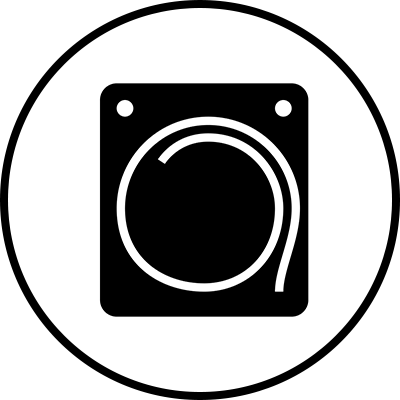
The demands placed on subwoofers over the last years have increased substantially to the point where traditional design concepts are no longer valid. For Genelec, in order to achieve the absolute best performance possible, bold initiatives must be taken.
Drawing on years of acoustic research and knowledge, Genelec's engineering group accepted the challenges placed upon them in the beginning of the 21st Century. The totally unique, curvilinear shape of the LSE™ Series Active Subwoofer enclosure is the revolutionary patented result of their efforts.
All of the Genelec LSE™ series subwoofers feature this innovative Laminar Spiral Enclosure™ (LSE™) bass reflex cabinet. It provides excellent laminar flow characteristics with minimal turbulence noise and enables an optimal packing of a very long reflex tube into a small space.

The learnings from the LSE Technology are also utilized in the reflex port design of our aluminium enclosure products.
The spiral-shaped design yields an extremely rigid enclosure exterior while also forming the subwoofer's integral port. The fact that one is part of the other means that air flow in and out of the enclosure's interior through the port is totally unrestricted. This results in an extraordinarily accurate and responsive low-frequency system with measured second and third harmonic distortion levels typically better than 30 dB below the fundamental.

When combined with Genelec stereo and multichannel bass management active electronics, the LSE™ Series Subwoofers provide a low-frequency listening experience like no other. The result is a product range with impeccable technical performance: The Genelec LSE subwoofer range is unique, complete, functional, different from any other products on the market, and consistent.
Each transducer is driven by its own optimised amplifier.

Audio electronic crossovers allow to split the audio signal into separate frequency bands that can be separately routed to individual power amplifiers, which are then connected to specific transducers optimised for a particular frequency band.
In a typical 2-way loudspeaker system, the active crossover needs two power amplifiers — one for the woofer and one for the tweeter. The power amplifiers are connected directly to the drivers of an active loudspeaker, resulting in the power amplifier’s load becoming much simpler and well known. Each driver-specific power amplifier has only a limited frequency range to amplify (the power amplifier is placed after the active crossover) and this adds to the ease of design.
The active design principle offers multiple benefits:
- The power amplifiers are directly connected to the speaker drivers, maximising the control exerted by the power amplifier’s damping on the driver’s voice coil, reducing the consequences of dynamic changes in the driver electrical characteristics. This may improve the transient response of the system.
- There is a reduction in the power amplifier output requirement. With no energy lost in the passive crossover filter components, the amplifier power output requirements are reduced considerably (by up to 1/2 in some cases) without any reduction in the acoustic power output of the loudspeaker system. This can reduce costs and increase audio quality and system reliability.
- No loss between amplifier and driver units results in maximum acoustic efficiency.
- Active technology can achieve superior sound output vs. size vs. low frequency cut-off performance.
- All loudspeakers are delivered as a factory aligned system (amplifiers, crossover electronics and enclosure-driver systems).
Sophisticated drive unit protection circuitry for safe operation.

When working in critical audio production environments it is essential that monitoring systems remain reliable and functional at all times. One of the main reasons behind Genelec’s excellent success in broadcasting environments is the reliability of our products and a key element behind the reliability is the internal protection circuitry found in all products since 1978.
The protection circuitry prevents driver failures by detecting signal levels, and in case of sudden peaks or constantly too high levels, taking the signal level down automatically. Of course this feature does not affect the sound quality in any way when working within the specifications of the loudspeaker, but only prevents inadequate input signals from breaking the loudspeaker.

Protection circuitry features and benefits:
- Reduces the output level when required, (e.g. when driver voice coil temperature reaches the safe limit), which highly improves system reliability.
- Appropriate protection circuitry design in every loudspeaker and subwoofer enables the maximisation of system output sound level.
Precise room response compensation for optimizing in-room performance.

The interaction between room acoustic and loudspeaker radiation is complex. Each room changes somewhat the monitor’s response in a unique way, e.g. reflective vs. damped rooms, or placement against a wall vs. on a stand away from the walls.
All Genelec loudspeaker systems feature room response adjustments to compensate for the room influences and retrieve a flat frequency response at the listening position.
Analogue Systems
Genelec analogue loudspeaker systems provide versatile Room Response Controls. They include (depending on models):
- Bass Roll-Off and Bass Tilt
- Treble Tilt and Treble Roll-Off
- Bass Level
- Midrange Level
- Treble Level
- Desktop Control

At low frequencies two main controls are provided. The Bass Tilt control, which acts as a shelving filter together with the Bass Roll-off control allowing you to optimize the low and very low frequency response of the system in different installations. Bass, midrange and treble level controls are provided in large systems. These controls allow to optimize the relative balance between the various pass bands.
The operating manual and datasheet of each loudspeaker contains a list of preferred room response control settings for different installations. These have been specified out of long practical experience and measurements of various kind of typical acoustic environments.
Smart Active Monitor (SAM™) Systems
Genelec SAM Systems offer a comprehensive, solution-oriented, intelligently networked product range which all feature Genelec Loudspeaker Manager (GLM™) software and its automatic calibration system called AutoCal™.
Genelec AutoCal provides the industry’s first integrated process for complete automated measurement, analysis, and adjustment of every monitor on the GLM control network. The system measures the response in the listening area and applies relevant compensation in the low and low-mid frequencies to minimise the detrimental room acoustic anomalies as well as the differences between various listening positions. AutoCal also aligns relative levels, time-of-flight, as well as adjusts correct crossover phase (called AutoPhase) for all subwoofers on the network.

The Acoustic Response Editor provides accurate graphical display of the measured response, filter compensation and the resulting system response for each monitor, with full manual control of acoustic settings.
Referencias
"Genelec wirft mit dem 7040A einen für Genelec-Verhältnisse sehr kompakten Subwoofer auf den professionellen Markt, der mit innovativem Design als ideale Ergänzung für die kleineren Monitorsysteme 8010, 8020 und M030 dienen soll."
-Felix Klostermann, the author of the review article
{"fi-FI":"7040A Subwoofer online review in German by Bonedo Magazin (DE). August 2015.\n\nRead the full review: [Bonedo Magazin 7040A Review](https://www.bonedo.de/artikel/einzelansicht/genelec-7040a-test.html "Bonedo Magazin 7040A Review")","ru-RU":"7040A Subwoofer online review in German by Bonedo Magazin (DE). August 2015.\n\nRead the full review: [Bonedo Magazin 7040A Review](https://www.bonedo.de/artikel/einzelansicht/genelec-7040a-test.html "Bonedo Magazin 7040A Review")","de-DE":"7040A Subwoofer online review in German by Bonedo Magazin (DE). August 2015.\n\nRead the full review: [Bonedo Magazin 7040A Review](https://www.bonedo.de/artikel/einzelansicht/genelec-7040a-test.html "Bonedo Magazin 7040A Review")","en-US":"7040A Subwoofer online review in German by Bonedo Magazin (DE). August 2015.\n\nRead the full review: [Bonedo Magazin 7040A Review](https://www.bonedo.de/artikel/einzelansicht/genelec-7040a-test.html "Bonedo Magazin 7040A Review")","sv-SE":"7040A Subwoofer online review in German by Bonedo Magazin (DE). August 2015.\n\nRead the full review: [Bonedo Magazin 7040A Review](https://www.bonedo.de/artikel/einzelansicht/genelec-7040a-test.html "Bonedo Magazin 7040A Review")","es-ES":"7040A Subwoofer online review in German by Bonedo Magazin (DE). August 2015.\n\nRead the full review: [Bonedo Magazin 7040A Review](https://www.bonedo.de/artikel/einzelansicht/genelec-7040a-test.html "Bonedo Magazin 7040A Review")"}
Encuentra tu representante

Documentación
Documentos
Operating Manual 7040A Brochure 7040A - English 7040超紧凑低音音箱 - Chinese Bass Management User Guide Classic Active Monitoring Series Catalogue 2018 Genelec Home Studio Audio Monitoring Guide (2023) Genelec 7040A Operating Manual - Chinese Genelec Home Studio Audio Monitoring Guide (German version)"Genelec wirft mit dem 7040A einen für Genelec-Verhältnisse sehr kompakten Subwoofer auf den professionellen Markt, der mit innovativem Design als ideale Ergänzung für die kleineren Monitorsysteme 8010, 8020 und M030 dienen soll."
-Felix Klostermann, the author of the review article
7040A Subwoofer online review in German by Bonedo Magazin (DE). August 2015.
Read the full review: Bonedo Magazin 7040A Review
hello









